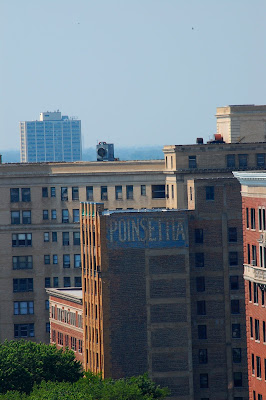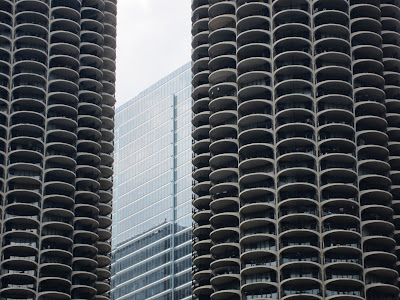 Like most Americans who read On the Road or saw Cameron Crowe's "Elizabethtown" at a young age, I romanticize the roadtrip. Its a fundamentally American concept as we discussed in my American Coming of Age Novel course this past semester at University of Edinburgh. For in what other country could you drive for hours on end and see nothing more than pine trees, cornfields, or desert and actually enjoy that? Geography inhibits the roadtrip in most countries, but its about more than just how to travel around a map, its a mentality.
Like most Americans who read On the Road or saw Cameron Crowe's "Elizabethtown" at a young age, I romanticize the roadtrip. Its a fundamentally American concept as we discussed in my American Coming of Age Novel course this past semester at University of Edinburgh. For in what other country could you drive for hours on end and see nothing more than pine trees, cornfields, or desert and actually enjoy that? Geography inhibits the roadtrip in most countries, but its about more than just how to travel around a map, its a mentality.
This is where you should start rolling your eyes, but don't worry, I'm not about to discuss the self-discovery one can get as they spend their annual salary just on gas. No, it goes back to an old Nineteenth Century concept, the Manifest Destiny. If seen as a romantic metaphor, Manifest Destiny entailed claiming the land in the West that was rightfully yours. If seen realistically, it was a good excuse for American Indian genocide. I'm going with the former viewpoint here. Ironically, in order to claim our land we must move through it, occasionally putting our mark on it by constructing the largest ball of twine or whatever.

Some of my favorite authors, American or not, have examined this drive (both literal and metaphorical).

As John Steinbeck wrote in his memoir Travels With Charley, in which he attempted to rediscover the America he once wrote about with his dog, Charley, as his companion:
“I saw in their eyes something I was to see over and over in every part of the nation – a burning desire to go, to move, to get under way, anyplace, away from Here. They spoke quietly of how they wanted to go someday, to move about, free and unachored, not toward something but away from something. I saw this look and heard this yearning everywhere in every state I visited. Nearly every American hungers to move”
 Or as Neil Gaiman, ironically another Englishman like my American Coming of Age Novel professor, asserted in one of my all time favorite novels, American Gods, that roadside attractions are holy places:
Or as Neil Gaiman, ironically another Englishman like my American Coming of Age Novel professor, asserted in one of my all time favorite novels, American Gods, that roadside attractions are holy places:"As they passed their first signpost for Mount Rushmore, still several hundred miles away, Wednesday grunted. 'Now that," he said, 'is a holy place.' Shadow had thought Wednesday was asleep. He said, 'I know it used to be sacred to the Indians.' 'It's a holy place," said Wednesday. 'That's the American Way—they need to give people an excuse to come and worship. These days, people can't just go and see a mountain. Thus, Mister Gutzon Borglum's tremendous presidential faces. Once they were carved, permission was granted, and now the people drive out in their multitudes to see something in the flesh that they've already seen on a thousand postcards.'"

Basically, what I'm getting at is, I too have picked up the fervor for the road. There's something about coasting at a consistent 70MPH on roads populated by fields or trees more than people. The static scenery means I inevitably read the billboards I typically ignore. I wait until the radio signal disappears to delve into a mix CD that usually features too much Band of Horses on it. I enjoy the landscape and solitude of the drive itself, but also that race to my destination. I note the gas stations on the way, but hope I don't have to stop so I can get there faster. It's an odd mix of wanting to drive past every town with a ridiculous name in this state to waiting for my exit sign to come up.
 My exit on Tuesday was Duluth, Minnesota. Duluth is just two hours away from the Twin Cities, yet I hadn't been there since I was fifteen and took a camp-mandated sailing trip on the infamous Lake Superior. Back then, Duluth meant a piece of land where we could finally get off the heaving boat I had been seasick (lakesick?) on all morning. More than six years later, it deserved a second look.
My exit on Tuesday was Duluth, Minnesota. Duluth is just two hours away from the Twin Cities, yet I hadn't been there since I was fifteen and took a camp-mandated sailing trip on the infamous Lake Superior. Back then, Duluth meant a piece of land where we could finally get off the heaving boat I had been seasick (lakesick?) on all morning. More than six years later, it deserved a second look.
So on Tuesday, I buckled up at 9:30am and planned to reach the city before lunch. I thought I liked pine trees, but after two hours of nothing but them I was eager for a change of scenery. Lake Superior was good enough. We may have 9,999 other lakes in Minnesota, but this is the largest in the state and fourth in the world. It feels like an ocean and can be just as violent as one after it sunk the S.S. Edmund Fitzgerald in 1975. Its also deathly cold and even dripping a toe in the water in July can send shivers up your spine. A true force of nature.

Superior may be an intimidating body of water, but its also a very attractive one. Duluth uses the lake for its famous tourist attraction, Canal Park. A former warehouse district, its been converted to an area of cute cafes and boutiques, but it still has a nod to its origins. The lighthouses (which I will show you in the next post) and this famous lift bridge you've been staring out throughout this post make for a fantastic photo op.
 [Here's the lift bridge in action.]
[Here's the lift bridge in action.]
 As far as I'm concerned, your car and camera are all that matter on a roadtrip.
As far as I'm concerned, your car and camera are all that matter on a roadtrip.








































